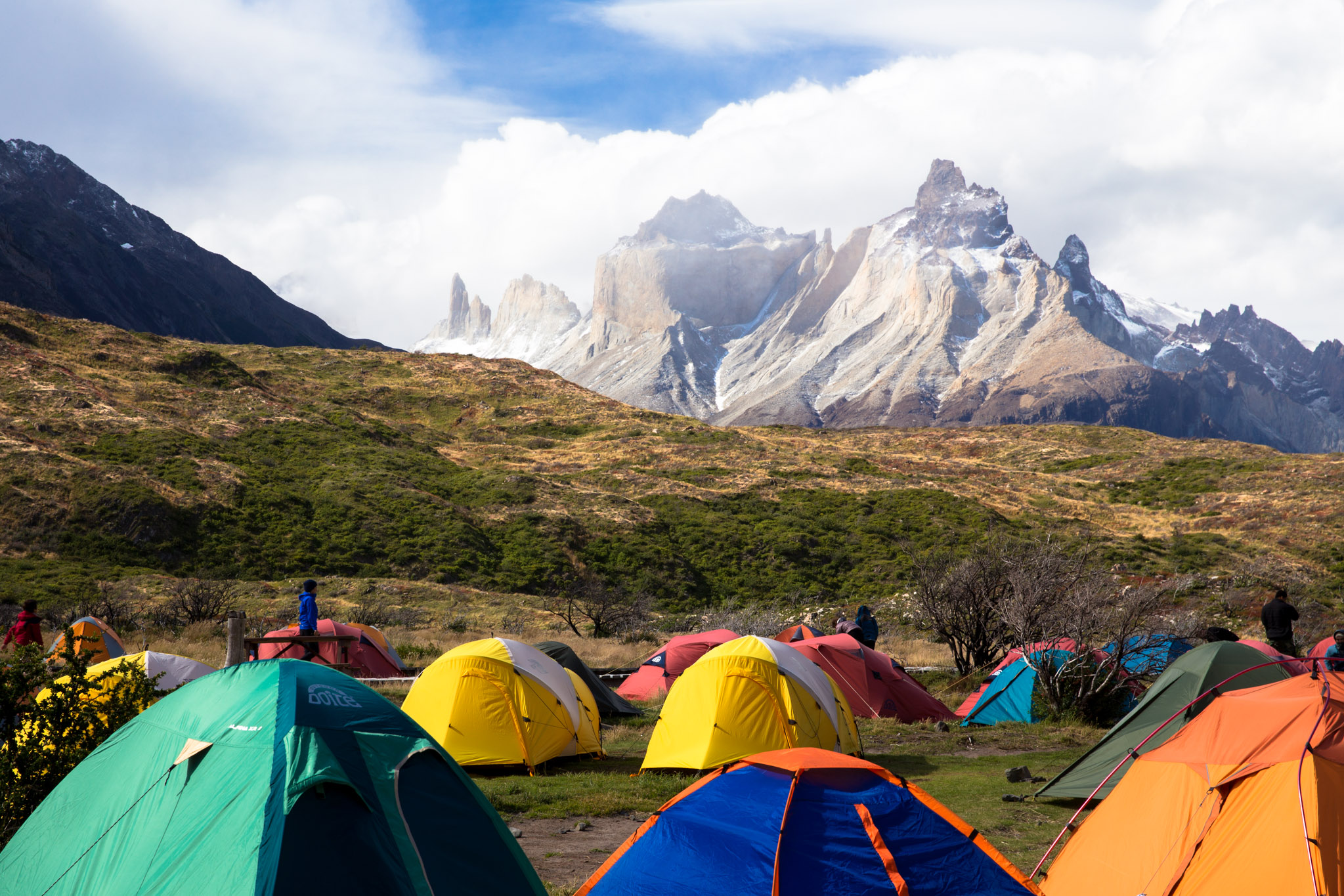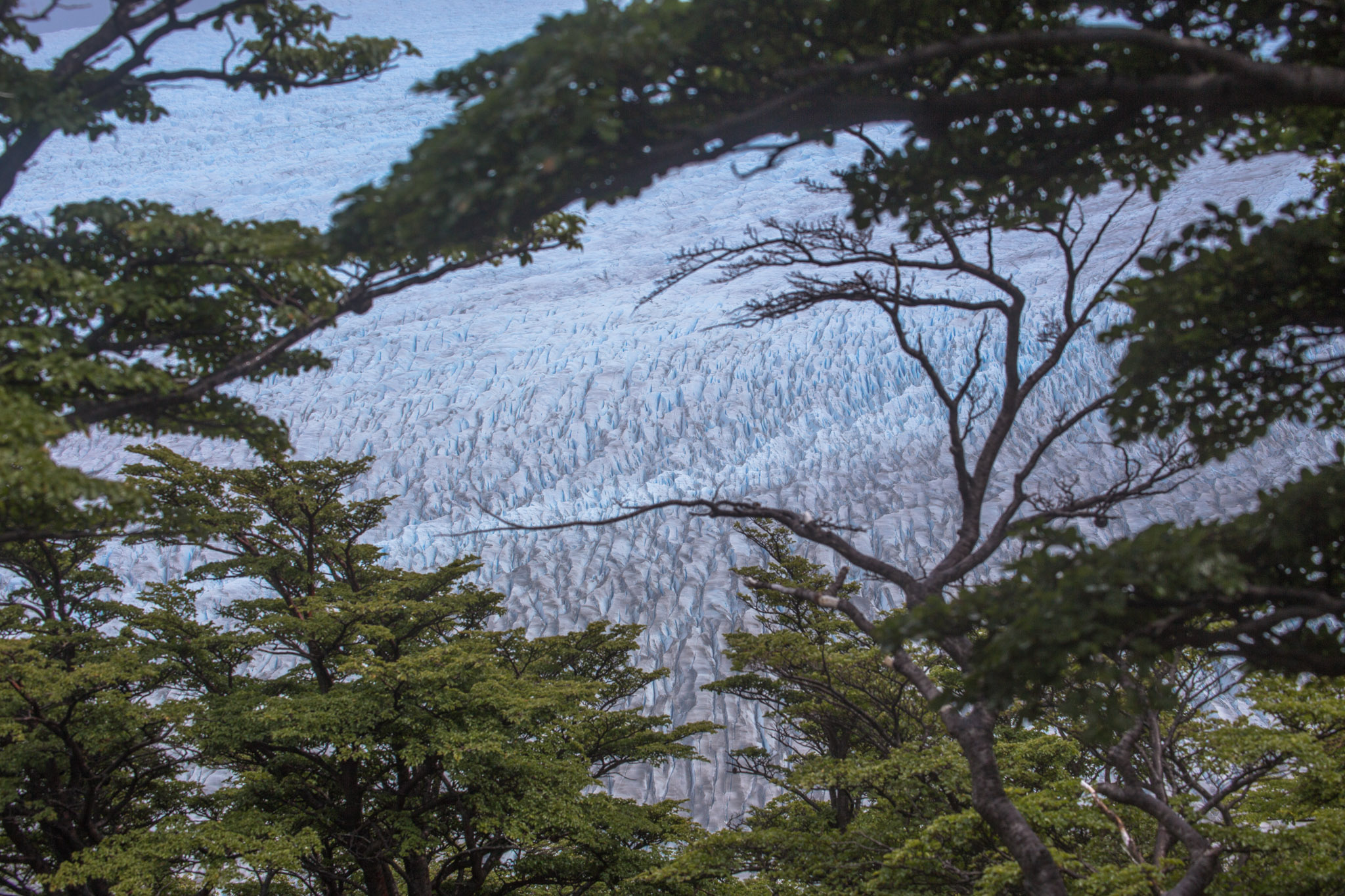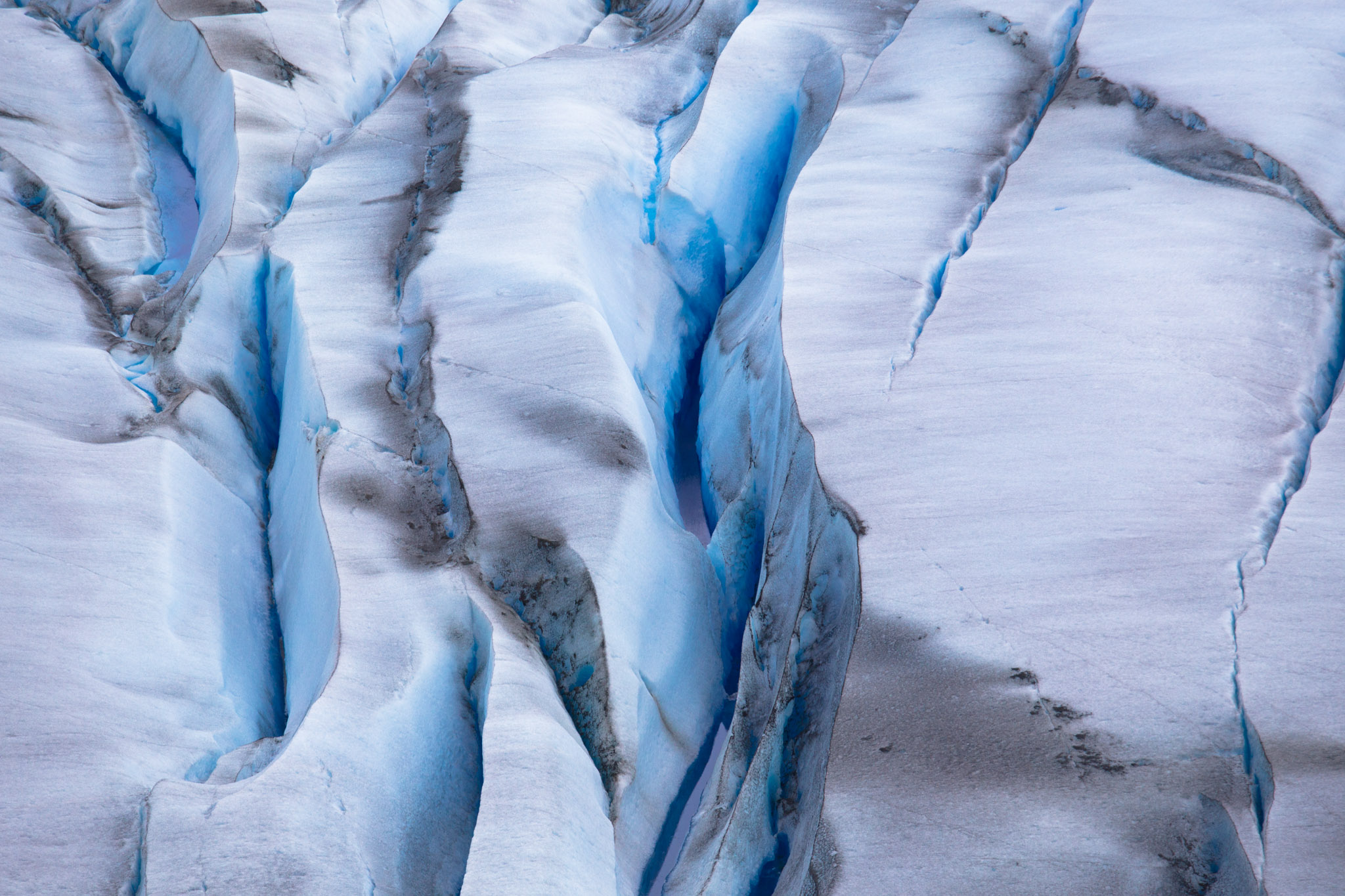El Chalten - Mt Fitz Roy and Parque Nacional los Glaciers
Having left the southern ice fields and fjords behind in Chile we journeyed north through the pampas. With its wide open landscape, windmills and sheep it was easy to forget that we were not in Australia. Only the occasional herd of guanaco and odd gaucho astride a horse reminded us that we were now in Argentinian Patagonia. Our destination was El Chalten, a tiny town at the foot of the Southern Patagonian Ice Field and the self proclaimed hiking capital of Argentina.
Hiking through the trees on the first day. The Fagus are just starting to turn colour in some areas.
The landscape here seems to contradict itself, the dry dusty ground offers little nutrients to the low and thorny scrub that covers the plains yet is periodically interrupted by large rushing veins of milky blue glacial melt water seemingly in a hurry to escape the mountains. As we drew closer to our destination the light was fading and through the pink haze of sunset the unmistakable peaks of Fitz Roy and Cerro Torre appeared to glow. The town itself is nestled in a valley at the foot of the mountains and is at the mercy of the winds they create.
This region forms the northern most reaches of the Patagonian ice sheet and the Parque Nacional los Glaciares. We were delighted to learn that in a rare gesture of generosity there is no park entrance fee and all camping is free. Having surveyed the hiking options in the area we decided on the classic triangle hike, which over three days allows good views of the mountains and their accompanying glaciers. That is, if the clouds threatening to hang around all week miraculously cleared. Nevertheless, kitted up we begin the first day's hike bouncing with comparatively light packs (see Torres del Paine). The path leads us up a steady but steep slope for about 6km and as the day heats up so do we. Reaching the first mirador we are disappointed with the cloudy sky and do not linger. Tired and a little dejected we stop briefly for lunch only to find its is but a short way further to the second mirador. Here we are delighted with our first cloudless view of the mountains. A crystal clear creek cascading down the slope and a view of the path winding down to the valley bellow lifts our moods. We are treated with spectacular views for the remainder of the walk to the campsite, arriving in the early afternoon just as clouds once again close in on the mountains above. From the campsite there is the option of two side trails, one climbs steeply to a mirador, the other promises a more leisurely walk to a nearby glacier and it's resultant lake.
'A pleasant 45min walk to the mirador overlooking the glacier'... *cough*
Given the cloudy vista and slight fatigue we opt for the second option, reassured by the 45 minute one way time estimate. What the map neglected to properly explain was there are in fact two hike options for the glacier and if one is to follow the sign posts on the path pointing to the lake rather than the glacier then they are in for a 3.5 hour hike requiring one to scale massive boulders, make ill advised leaps over large crevices and fjord fast flowing rivers. Guess which one we took. There were tears. Often in situations like this I will look back and say it was worth it. Not this time, by the time we got there the clouds were obscuring much of the glacier and the wind was blowing over the lake. We heard many loud rumbles of falling ice but only managed to see one small cascade. It was pretty but I was exhausted. On the plus side we slept really well that night!
The next day promised to be easier. After a lazy morning and a fortifying breakfast of porridge we set off for the Laguna Torre, situated at the base of the Cerro Torre and glacier. It was a pleasant hike through meadows and Fagus forests and finally down to the floor of the valley carved by the glacier we were heading to. Glacier valleys are interesting things, littered with enormous boulders spat out by the retreating ice. As one approaches the remaining ice mass the vegetation gives way to rocky scree fields scattered with multi veined frigid rivers, like a Martian landscape too hostile to support significant levels of plant life. It was here that we camped for the night in a newly sprouted group of Fagus trees at the base of the glacier. Once again clouds thwarted our views of the mountains yet made for fascinating viewing as they swirled, shifted and disappeared only to regenerate over the peaks.
Our final day lead us back to El Chalten. As condors soared over the valley we frequently looked behind in the hope of a clear view. Finally about half way back we got our first clear view of Cerro Torre, a little late but better than never. At the last mirador we had great views over the whole range with both towers in view and a couple of condors thrown in for good measure. We arrived back in town in time for lunch just as the wind really picked up. There was just enough time to pitch our tent in a protected nook of the campground before it started to rain (horizontally). Perhaps our recent trekking endeavours have encouraged the hiking gods to look upon us favourably.
A pleasant hike to a nearby waterfall the next day left us feeling like we had done El Chalten, the capital of hiking, justice. As it turns out this was our last stop in Patagonia. For now.








































